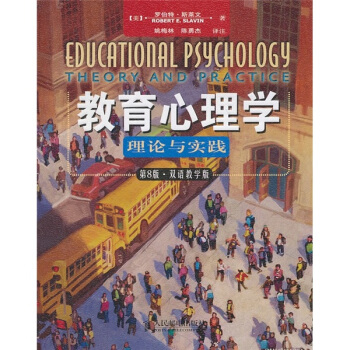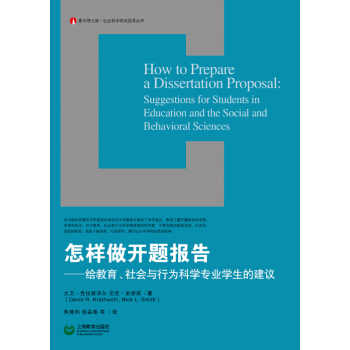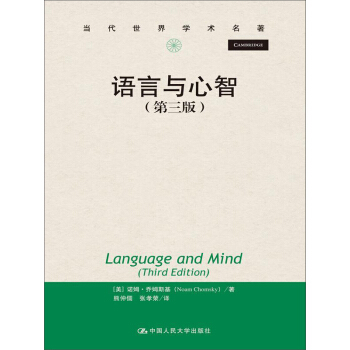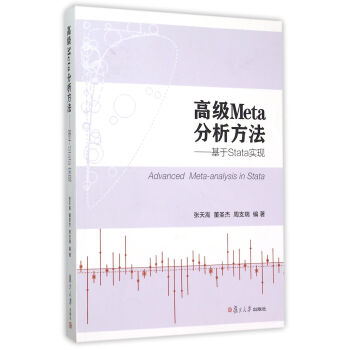![认知语言学入门(第2版) [An Introduction to Cognitive Linguistics]](https://pic.tinynews.org/10035058/149518f6-6cb6-4c74-ab3f-3a7ac586e273.jpg)

具体描述
编辑推荐
《认知语言学入门(第2版)》是继《认知语言学入门》一版而出。《认知语言学入门》一版于1996年问世,成为当时国内外一本认知语言学教科书。在书中,两位作者细致入微地阐释了认知语言学的核心概念,同时,又探讨了在诸如象似性、词汇变化、语法化和语言教学等研究中引入认知概念的种种益处。内容简介
《认知语言学入门》一版于1996年问世,成为当时国内外一本认知语言学教科书。在书中,两位作者细致入微地阐释了认知语言学的核心概念,同时,又探讨了在诸如象似性、词汇变化、语法化和语言教学等研究中引入认知概念的种种益处。此次第二版增加了构式语法理论、概念合成理论、关联理论等内容,并对原来的内容进行了修订,从而更全面地反映认知语言学研究近年的新成果,更好地适应不同读者的需求,是语言学界不可多得的一本内容广泛的认知语言学教科书。
内页插图
目录
Publishers acknowledgementsPreface to the second edition
Typographical conventions
Introduction
1 Prototypes and categories
1.1 Colours,squares,birds and cups:early empirical research
into lexical categories
1.2 The internal structure of categories:prototypes,attributes,
family resemblances and gestalt
1.3 Context·dependence and cultural models
2 Levels of categorization
2.1 Basic level categories of organisms and concrete objects
2.2 Superordinate and subordinate categories
2.3 Conceptual hierarchies
2.4 Categorization and composite word forms
2.5 Basic level categories and basic experiences:actions,
events,properties,states and locations
3 Conceptual metaphors and metonymies
3.1 Metaphors and metonymies:from figures of speech to
conceptual systems
3.2 Metaphors,metonymies and the structure of emotion
categories
3.3 Metaphors as a way of thinking:examples from science
and politics
3.4 Thinking in metonymies:potential and limitations
4 Figure and ground
4.1 Figure and ground,trajector and landmark:
early research into prepositions
4.2 Figure,ground and two metaphors:a cognitive
explanation of simple clause patterns
4.3 Other types of prominence and cognitive processing
5 Frames and cOnstructions
5.1 Frames and scripts
5.2 Event-frames and the windowing of attention
5.3 Language-specific framing and its use in narrative texts
5.4 Construction Grammar
6 Blending and relevance
6.1 Metaphor,metonymy and conceptual blending
6.2 Conceptual blending in linguistic analysis and description
6.3 Conceptual blending in advertising texts,riddles and iokes
6.4 Relevance:a cognitive·pragmatic phenomenon
7 Other issues in cognitive linguistics
7.1 lconicity
7.2 Lexical change and prototypicality
7.3 Cognitive aspects of grammaticalization
7.4 Effects on foreign language teaching
Conclusion
精彩书摘
For obvious reasons, the discrepancy between the saentifically founded models of experts and the naive models of laypersons is particularly notice-able in scientific and technical domains. Consider for example the case of the naive model of the physical phenomenon of motion. McCloskey (1983) carried out experiments and interviews to elicit the cultural model of motion prevalent in America. He asked his informants to imagine an airplane flying at constant speed and altitude. In addition, the informants should assume that at one point during the journey a large metal ball is dropped from the plane, which continues flying at the same speed and altitude and in the same direction. The task was to draw the path the ball will follow until it hits the ground, ignoring wind and air resistance. Its final position in relation to the plane should also be indicated. Before you read on, you should perhaps try to solve the task yourself, i.e. make your own'drawing of the paths followed by the plane and the metal ball.Now compare your drawing with the scientifically correct answer to the problem. As physicists tell us, the ball will fall in a kind of parabolic arc and hit the ground directly below the point the plane has reached in the meantime. The ball will take this kind of path because it will continue to travel horizontally at the same speed as the plane while acquiring constantly increasing vertical velocity.
If your drawing does not agree with the scientific explanation, you are in good company, with 60 per cent of the informants, because no more than 40 per cent of McCloskey's informants gave the scientifically correct response. The majority of the subjects thought that the ball would take a different course (for instance that it would drop in a straight line or would fall in a diagonal), revealing a 'naive' cultural model of motion that differs from the expert model current in physics.
What this experiment shows is that the cultural models held by the majority of the people need not be, and often are not, in line with the objectively verifiable, scientific knowledge available to experts. If we consider that cul- tural models are based on the collective experience of a society or social group this does not come as a surprise. To get through everyday life, laypersons do not need scientifically correct models, but functionally effective ones. This means that as long as a model is in line with what we perceive and enables us to make functionally correct predictions, it can have widespread currency although it may be technically inaccurate.
Another illuminating example is provided by Kempton (1987). When she studied the American cultural model of home heat controls or thermostats by means of interviews and behavioural records, she found two competing theories.
One, the feedback theory, holds that the thermostat senses temperature and turns the furnace on and off to maintain an even temperature. The other, which I call the valve theory, holds that the thermostat controls the amount of heat. That is, like a gas burner or a water valve, a higher setting causes a higher rate of flow.
(Kempton 1987: 224)
The feedback theory is technically correct, while the valve theory is wrong. What is of special interest about the two theories is that even though the valve theory is wrong, it also enables us to make the right predictions for the control of temperature in a house and therefore there is no reason why laypersons should not espouse it.
It seems, then, that many naive cultural models, espeaally in the sclen- tific and technological domain, are inaccurate from a scientific point of view, but usually correct as far as their functional predictions are concerned. In other domains of everyday life the question of the accuracy of a model does not seem to be as relevant. For example, for the cultural models of SANDCASTLE, BEACH, DESKS arid BREAKFAST which have been singled out in this section for illustrative purposes, it would not be appropriate to speak of correct or inaccurate models, although experts with particularly refined cognitive models could certainly
be found for all spheres. What counts is that 'ordinary' everyday experiences do not follow the doctrines laid down for scientific research and the rules of
formallogic, but have other, more genuinely cognitive, principles behind them, some of which will be discussed below in Chapters 3 and 4.
To conclude this section, here is a summary of the main issues that have been addressed:
·Cognitive categories interact with and influence each other and this can cause a shift of category prototypes, of boundaries and of the whole category structure.
·Over and above the actual context in which the use of categories is embedded, the internal structure of categories depends on cognitive and cultural models which are always present when language is processed.
·A number of terminological distinctions seem necessary for a differen-tiated view of the context-dependence of categories. Thus we have defined situation as the interaction of objects in the real world;
-context as the cognitive representation of the interaction between cognitive categories (or concepts);
-cognitive model as the sum of the experienced and stored con-texts for a certain field by an individual;
-cultural model as a view of cognitive models highlighting the fact that they are intersubjectively shared by the members of a society or social group.
·'Naive' cultural models, especially those for technical domains, need not be in line with the saentifically accurate knowledge of experts, but may be based on what is communal experience, and strictly speaking even 'wrong' assumptions. Nevertheless these naive cultural models can be shared by most laypersons in a society as long as the functional pre-dictions they make are correct.
Exercises
1.In pragmatics and sociolinguistics the participants of a speech event are often seen as part of the wider 'situational context'. Discuss this notion of 'context' in relation to the one put forward in this chapter.
2.Object categories like CAR are characterized by attributes relating to their form, size, material, parts, functions, and the associations and emotions they call up. Discuss which of these attributes are more likely to change their 'weight' when the context changes, let us say from ordinary traffic to a car race context.
3.Repeat the two-stage test in exercise 5 0f Section l.1 with special contexts like The estate agent climbed out of his . . . (Jaguar, Rolls-Royce, BM W,
Mercedes, etc.) or The children loved to climb the . . . (apple tree, pear tree, cherry tree, etc.) in the orchard given before the association and the good-ness-of-example rating task.
4.Eskimos have many words for different types of snow, Aborigines for different types of sand, and in Arabic one must choose from a whole range of words which are subsumed under the Western category CAMEL(cf. Lyons 1981: 67). Can you explain these phenomena with the help of the notion of 'cultural model'?
5.Compare the cultural model BACHELOR with that of its apparent counter-part SPINSTER. Discuss the parallel examples GENTLEMAN-LADY, MASTER-MISTRESS and BOY-GIRL.
……
用户评价
我必须强调一下这本书在“批判性思维培养”方面的价值。它不仅仅是提供了一套现成的理论模型,更重要的是,它训练了读者去质疑那些被我们视为“理所当然”的语言习惯。在深入探讨了语言的具身性和情境依赖性之后,我开始对那些宣称存在“普适的、脱离肉体的”语言规则的观点产生了强烈的反思。这本书没有强迫你接受任何单一的学派思想,反而是鼓励你去比较、权衡不同解释框架的优劣,并最终形成自己能够驾驭的分析工具箱。这对于任何希望在人文社科领域进行独立研究的人来说,都是极其宝贵的财富。它教会我们,语言学研究的乐趣不在于找到标准答案,而在于理解为什么会有如此多不同的、却又都能在特定认知结构下成立的解释。这本书真正做到了赋能读者,让他们能够带着一套全新的、充满质疑和探究精神的眼镜去看待语言现象。
评分这本书的结构设计简直是教科书级别的典范。如果说语言是通往人类心智的桥梁,那么这本书就是为这座桥铺设的最坚实、最清晰的路基。每一章的过渡都极其自然流畅,从基础的隐喻和转喻,到更复杂的概念结构,再到对语篇和语境的探讨,逻辑链条始终保持着惊人的连贯性。我特别欣赏它在处理复杂理论时所采用的“锚定”策略——总会回到一个读者容易理解的母题,然后在此基础上进行结构搭建。这种设计让读者在面对稍有难度的内容时,也不会感到迷失方向。而且,书中的例证选取非常具有代表性,既包含了经典的语言学案例,也巧妙地融入了当代社会中常见的语言现象,使得理论不再是悬浮在空中的假说,而是与我们的日常生活息息相关的工具。阅读体验流畅得令人惊讶,仿佛作者一直在你耳边轻声细语地为你讲解,确保你每一步都走在了正确的轨道上。
评分这本书简直是打开了我认知世界的一把钥匙!我一直对语言的内在机制充满了好奇,总觉得我们每天不假思索使用的词汇和句子背后隐藏着某种更深层次的逻辑。这本书没有一开始就用那些晦涩难懂的术语把我轰炸一遍,而是非常巧妙地从日常生活的经验入手,比如我们如何理解“上”和“下”,如何将抽象的概念具象化。作者的叙述方式非常亲切,仿佛一个经验丰富的向导,耐心地为你指引方向,而不是一个高高在上的学者在宣讲理论。它让我开始反思自己是如何“看见”世界的。比如,当我们说“时间在流逝”时,我们实际上是将一个抽象的维度(时间)映射到了一个我们能感知到的实体运动(流逝的物体)上。这种类比和隐喻的力量,在这本书里被剖析得淋漓尽致,让我对人类思维的创造性有了全新的认识。读完第一部分,我简直迫不及待地想去观察身边所有人的交流方式,试图去解码他们潜意识中正在使用的那些认知框架。这种从“知道”到“理解”的飞跃,是这本书给我带来的最宝贵的体验。它不仅是关于语言的,更是关于人类如何构建意义的哲学探讨,只是载体是语言而已。
评分坦白地说,我原本以为读一本关于“认知”的语言学书籍会是一件相当枯燥的事情,充满了对图表和符号的解读,但这本书彻底颠覆了我的预期。它充满了活力和一种近乎“侦探小说”般的吸引力。作者似乎非常懂得如何激发读者的好奇心,总是在关键时刻抛出一个看似简单却蕴含巨大信息量的问题。比如,关于视点(Perspective)的讨论,作者并没有停留在语法层面上,而是深入到了人类在感知空间和事件时,如何主动选择和构建观察点。这不仅仅是语言现象,更是心理学和现象学的交汇点。我甚至发现,自己写邮件或报告时的措辞都在潜移默化地发生改变,开始有意识地去调整我的表达焦点,以更好地引导读者的认知路径。这种实践性和理论性的完美结合,使得学习过程变成了一种自我反思和技能提升的旅程。它不是让你被动地接受知识,而是让你主动地去观察和实践语言背后的运作机制。
评分我得说,对于一个对语言学稍有涉猎但又不想被过度学术化的文本淹没的读者来说,这本导论的平衡掌握得极其到位。它不像某些入门书籍那样,为了追求“简单”而牺牲了深度的严谨性,导致读者最后什么都没学到。相反,它在保持可读性的同时,对核心概念的阐释是扎实且富有洞察力的。例如,它在解释“框架语义学”(Frame Semantics)时,不仅仅是给出了一个定义,而是通过大量的例子,比如“买卖”这个事件框架,细致地拆解了其中的角色、关系和必要条件。这种层层递进的讲解方式,让那些原本看似陌生的理论概念,迅速在我脑海中建立了清晰的结构图。我尤其欣赏作者在处理不同理论流派之间的异同点时的态度——客观、公正,且着眼于它们在解释人类认知现象上的互补性。这使得读者在建立自己的知识体系时,不会陷入非此即彼的泥潭。这本书真正做到了“入门而不浅薄”,为后续的深入研究打下了一个极其坚实的地基。
评分购买的书很好,快递小哥很快就送到了,
评分书很不错,有帮助
评分是正版 印刷各方面都很好
评分《认知语言学入门(第2版)》是继《认知语言学入门》第一版而出。《认知语言学入门》第一版于1996年问世,成为当时国内外第一本认知语言学教科书。在书中,两位作者细致入微地阐释了认知语言学的核心概念,同时,又探讨了在诸如象似性、词汇变化、语法化和语言教学等研究中引入认知概念的种种益处。
评分正版
评分毫无疑问温格瑞尔在语言学中的地位无人能及,即便是在语言学派纷起的今天。无论是乔姆斯基,还是韩立德都无人能与之比肩。
评分这本书是赵教师2001年写的,出版10多年了,仍很畅销,这说明精典的魅力!这本书深入浅出,理论联系实际,是语言学专业的精典入门读物!向语言学专业的研究生郑重推荐!!!
评分能买到这本原版书真心不容易~~~对不起Lakoff哥几位了~~~不是不想买~~~读书人穷啊~~~只能看影印版了~~~哈哈~~~此书印刷质量杠杠的~~~搞认知语言学的人自然珍惜~~~买~~~买~~~买~~~
评分只有读原著才能赶紧学术进展
相关图书
本站所有内容均为互联网搜索引擎提供的公开搜索信息,本站不存储任何数据与内容,任何内容与数据均与本站无关,如有需要请联系相关搜索引擎包括但不限于百度,google,bing,sogou 等
© 2025 book.idnshop.cc All Rights Reserved. 静思书屋 版权所有

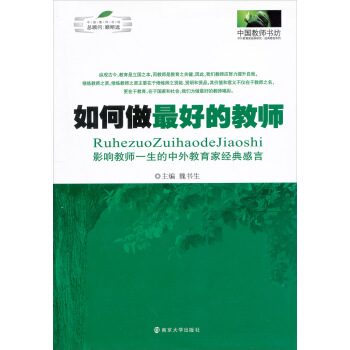
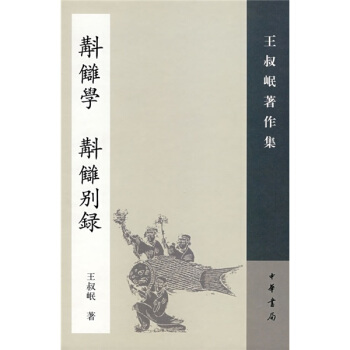

![专业学位硕士论文写作指南(第2版) [Guidance to Professional Master′s Dissertation] pdf epub mobi 电子书 下载](https://pic.tinynews.org/11604494/54a12f07Nd072f394.jpg)
![初识传播学:在信息社会正确认知自我、他人及世界 [A First Look at Communication Theory] pdf epub mobi 电子书 下载](https://pic.tinynews.org/11920995/573a838bNb199483d.jpg)
